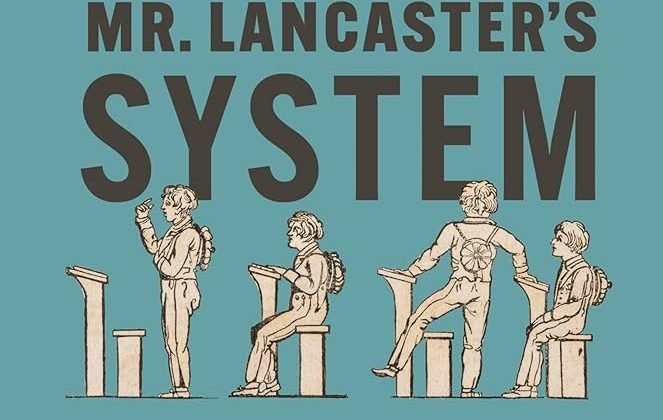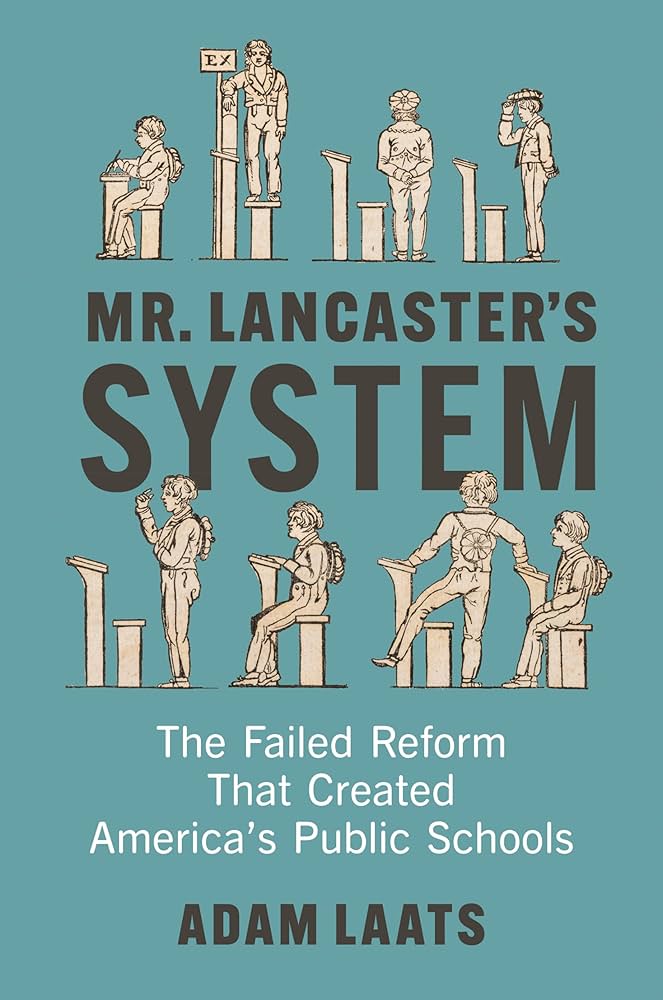

Adam Laats is Professor of Education and History at the State University of New York at Binghamton. This interview is based on his new book, Mr. Lancaster’s System: The Failed Reform That Created America’s Public Schools (Johns Hopkins University Press, 2024).
JF: What led you to write Mr. Lancaster’s System?
AL: There has always been a huge black box at the center of our understanding of the origins of US public schools. Back in the 1970s historians such as Lawrence Cremin and Carl Kaestle noted the outlines: 1.) There was a huge reform movement in the early 1800s based on the work of Joseph Lancaster. 2.) That movement failed. 3.) But somehow, that movement also succeeded; it led to the creation of modern public-school systems.
Those earlier historians left the mystery unsolved: How could a huge failure also be a revolutionary success? I hoped to figure it out.
JF: In 2 sentences, what is the argument Mr. Lancaster’s System?
AL: In the early 1800s, London reformer Joseph Lancaster promised a cheap way to educate low-income youth. It was a charade—because Lancaster was a deluded narcissist—but when it failed it inadvertently left behind the components of a modernized public-school system.
JF: Why do we need to read Mr. Lancaster’s System?
AL: The pattern that led to the implosion of the Lancasterian movement in the 1820s was more than a historical curiosity: it has been the pattern that has defined school reform in the USA ever since. Americans are addicted to the idea that poverty can be solved by tweaking schools, and that schools can be tweaked with a low-cost high-tech solution. It has never worked, but every new generation discovers it as if it were brand new.
Also, the school headlines these days are all about book bans and school-board battles, and those are important. Seen in the longer perspective, however, it becomes clear that those kinds of fights are the equivalent of dangerous but perennial storms. There are other changes afoot these days that are more like catastrophic climate change. Namely, we are seeing a decrease in school attendance for the first time in two centuries. As the longer-range history of my book shows, decreased attendance poses a real threat to the very existence of public schools.
JF: Why and when did you become an American historian?
AL: I started as a high-school history teacher in the 1990s. I loved it and never meant to leave, but I pursued a PhD at the University of Wisconsin to make myself into a better history teacher. One thing led to another and now I spend my time doing research at a university and working with grad students.
JF: What is your next project?
AL: The key that unlocked the Lancasterian mystery came as a surprise to me. The reason Bancroft-winning historians such as Lawrence Cremin had not seen it is because they were looking in the wrong place. The people who were most responsible for creating modern public schools were not the Lancasterians or even any anti-Lancasterians. Instead, it was the children who did it. It was due to children’s choices that the reform failed, but also due to children that cities were able to build modern school systems. In my current book I’m pursuing the bigger implications; I’m arguing that we can’t understand the early history of US public schools at all (1790-1860) until we understand the leading role played by children.
JF: Thanks, Adam!
Intriguing ideas, Adam, both in the Lancastrian schools book and the upcoming one about children’s efforts. If you are at HES, I’ll try to track you down for more info. Best, CG